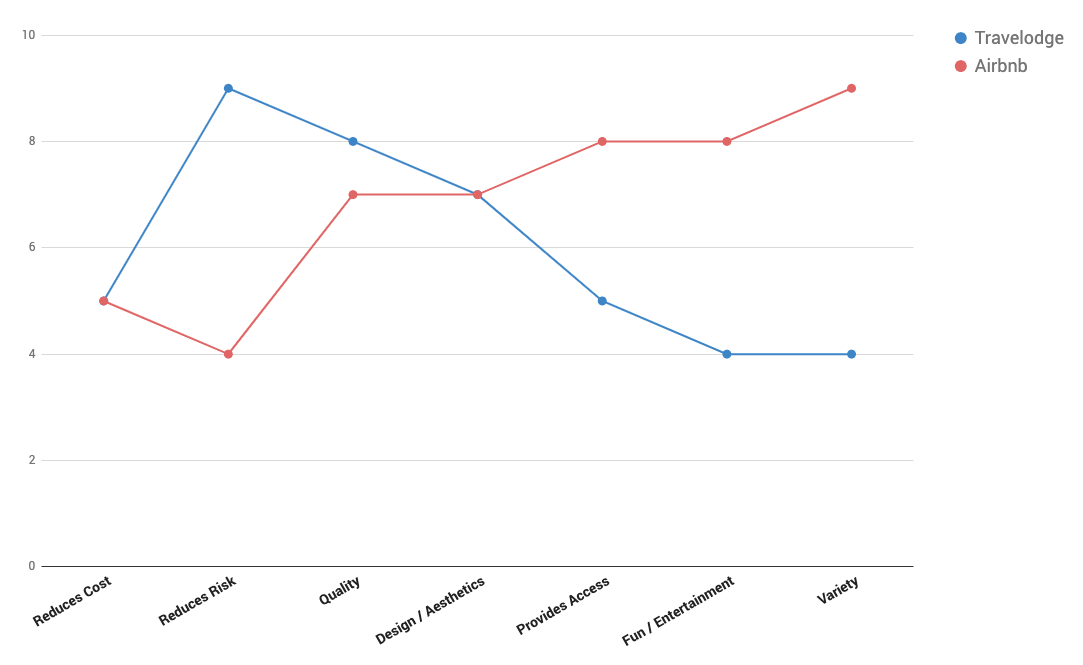
For your brand to establish a unique position and rise above the noise, your strategy needs to embrace trade-offs.
Trade-offs mean that you’ve crafted a position that targets a specific type of customer and serves them in a specific way. And in turn, you’ve made choices about what your product or service won’t do, and the customers you won’t pursue.
The concept of trade-offs has been infused into lots of sound business advice.
If you’ve been told to “find your niche”, you’ve thought about trade-offs. If you’ve heard the line about “a business that serves everyone, serves no one”, you’ve thought about trade-offs.
The trick though is to make sure your trade-offs are legit.
This can be tested with one simple question:
“Does the opposite of your brand strategy still make sense?”
In other words, could another business embrace the opposite approach and still be successful?
This is the question that author and strategist, Roger L. Martin asks in his corporate consulting work. He looks at a company’s core strategy and asks, “Can I make the opposite choice and not look stupid?”
An example he uses is when he consulted a wealth management company. Their strategy was to target wealthy individuals who wanted comprehensive wealth management services. Their core approach was to provide excellent service across all their customers’ needs.
What would the opposite of that be?
Target poor individuals who don’t want comprehensive wealth management services. And provide bad service across their needs.
Obviously, that doesn’t make any sense.
It’s not that their target customer is wrong or that providing excellent service is bad. The point is that it’s not a legit trade-off. They haven’t claimed a true strategic position within their market.
If they go after the obvious target market (wealthy individuals) in an obvious way (excellent service), then there’s nothing to distinguish them from every other competitor.
Their “core strategy” would be part of the strategy for every business in that space.
There’s no clear reason for a customer to notice or choose their business over another.
If an industry is overflowing with opportunity, a business could skate by with a cookie-cutter approach like that for a while. But without any clear differentiation, growth will still be hard.
And if the market contracts, those cookie-cutters are the first to feel the pain.
To avoid that, it’s critical to develop a brand strategy that’s unique and takes a legitimate stance within the market.
Opposite Brand Strategy Example
On the Map & Fire blog we wrote an article about trade-offs in the travel accommodations space. In it, we compare offerings from a large hotel chain, Travelodge, versus AirBnb.
This graph highlights the ways in which they have opposite strategies:

Travelodge’s high points center around Reducing Risk and providing consistent Quality. On the flip side, they’re less concerned about Fun and Entertainment and Variety.
AirBnb’s strategy is the inverse of this. Their customers will take on the risk of staying in the home of a stranger in exchange for a fun experience that they can’t get anywhere else.
In the controlled context of this example these two are opposites. But if we zoom out, Travelodge falls more into the cookie-cutter trap. Their strategy is difficult to distinguish from other established mid-range hotel chains.
AirBnb meanwhile was able to enter this market as an unknown 10 years ago and is now valued at more than $30 Billion. It’s an extreme example, but there’s no doubt they had a legit strategy within the market.
Map & Fire’s Opposite Strategy
For Map & Fire we also take a specific, somewhat opposite approach with our brand strategy services.
In the brand strategy space there are plenty of agencies that are highly creative. They have the expertise to deliver visuals and language for a brand that look and sound fantastic.
Companies will pay a lot of money to have an agency like this go off and come up with ideas for them. The agency might deliver a few potential directions, the client selects one, and they’re happy.
That’s a viable business model in the brand strategy space.
Map & Fire’s approach though is intentionally different than that.
One of the biggest challenges with the model above is that companies evolve and grow all the time. So, what happens as they’re ready to test the next iteration of their messaging and product? Do they have the tools they need to build on the previous engagement? Or is the only option to go back to the same creative agency and ask for new ideas?
Did their last engagement deliver an isolated output or a foundation to help the business grow?
This is how Map & Fire’s approach is different. Our aim is to work directly with a company’s leadership in a very collaborative way to define their brand strategy.
Along the way, we share new ways of thinking about their vision, their customers, the competition, and their product or service.
We then take those inputs and help communicate them through their visual brand and messaging.
We don’t just deliver a strategy to them, we help them craft that strategy in a way that they can build on over time.
So, the difference we provide is to deliver great work and the tools that built it.
Does this mean that a company actually becomes less dependent on us over time? Yup! And that’s what we want. We want to empower our clients to grow and succeed on their own.
Again, some companies prefer not to be involved in that process. They want to pay a person or team to come up with ideas on their behalf and deliver an output. And that’s totally fine.
That difference of approach highlights the trade-offs we’ve made.
It’s what’s required to prove that our business has made a legit strategic choice.
If you want to find out how Map & Fire can help your business craft a unique brand strategy, reach out for a consultation.


